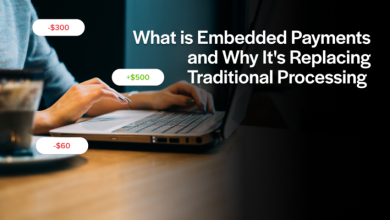In the digital first world today, physical rent collection checks, cash, chasing tenants simply does not work. Scaling and optimization Modern solutions are required by managers of property and landlords who wish to scale or optimize their activities. aches payments in that toolbox are one of the most potent ones. This article dives into how to set up ACH payments for rent, why it matters from a tech perspective, and how it will positively impact both your workflow and bottom line.
This is what is meant by ACH and the importance of it to rent collection
The network in the U.S. which is the electronic network of the movement of money between bank accounts is referred to as the National Automated Clearing House Association network (Automated Clearing House) -ACH. Why is it of particular relevance to rent collection:
- It makes bank-to-bank transfers (tenant-landlord) without checks and cash.
- It allows regular payments: it is very appropriate in monthly rent cycles.
- It brings automation, a reduction in transaction costs and an improvement in data.
- It converts the payment process of the landlord/tenant into a smooth digital process.
When you choose to set up ACH payments for rent, you’re effectively modernizing your rent-collection infrastructure, building automation, and reducing manual effort. As per real-estate fintech solutions (e.g., Baselane) the rate of ACH adoption in the renting context is rising at a rapid pace.
Technically, this implies that you are not merely replacing one form of payment with another, but rather it is aligning with an automated data-driven ecosystem, where payments, accounting and banking become part of each other.
Renting: The best advantages of using ACH
We can divide the key advantages, particularly in a systems and tech sense, down.
1. Less expensive and stable cash-flow
The use of credit card or check has higher charges, delays, paper work. Accommodative Housing is usually a lot less expensive. As an example: ACH fees may be in the range of $0.25-1.50 per transaction, as compared to a percentage on cards. baselane.com+1 The net income can be enhanced and it will be easier to model fees.
2. Automation & integration
When you set up ACH payments for rent, you unlock automation: recurring rent debits, scheduled payment runs, automatic reconciliation. New property management software allows you to automate reminders, automatic late-fee charges, and all payments are added to bookkeeping ledgers. baselane.com+1 APIs, bank-links (through plaid or other similar), dashboard automation and reporting can all be done.
3. Increased security and tracing
Bank-to-bank transport is done by secure rails through ACH transfers. Relative to checks (lost, delayed, forged), cash (no digital trail) ACH has audit logs, encrypted data and organized data. This is a major victory to property investors and managers who are concerned with compliance, transparency, and efficiency.
4. Increased tenant retention and experience
The digital amenity of automated rents, reduced interactions, and the option to pay through a portal/app are valued by tenants; they fulfill this current need. Happier tenants result in less friction, late payments and turnover.
Concisely: ACH is the scalable, data-integration, and lower-friction type of payment method that has been created on a technological basis.
How to technically set up ACH payments for rent (step-by-step)
The following is a realistic step-by-step overview of the procedure- technologically/integration wise.
Step 1: Choose your route
You have two main paths:
- Through your bank directly: You coordinate with your bank to allow the ACH collections, gather tenant bank data, file ACH debit requests, ACH debit reconciliation. It is functional, but it is not as integrated with property systems.
- Through property/fin-tech software: You choose a platform that accepts the rent collection through ACH (tenant portals, autopay, bookkeeping dashboard reporting). It is more automated and is more scalable. E.g., Baselane presents itself as one of such platforms.
On a technical level: by opting to go the software-based solution, you will use APIs, tenant portals (to connect bank accounts through Plaid or some other API), automatic debit scheduling, administrative dashboard, and data flows (payments to accounting to tax reporting).
Step 2: Connect bank accounts and authorization of tenants
Landlord/Manager you will require:
- Routing numbers and account numbers (bank account to have rent deposited).
- To every tenant: bank account and routing numbers (or a safe link to insert it himself/herself) and his/her express consent to recurring debits. Compliance is relevant with authorization.
Technical advice: Have a secure portal where tenants can enter their bank details, bank-links are tokenized (bank-data is not stored on an insecure server) and digital signatures or authorization forms are taken. This enhances security, compliance and is more scaleable.
Step 3: Set up recurrent payment plan and regulations
You’ll set up:
- Debts, dates, grace, and fines.
- Periodic (monthly, quarterly, etc).
- System of notification: reminder before the date of the due, confirmation after payment.
- Failure to handle: what is failure to handle a failed ACH.
Regarding technology stack: The system must have the ability to schedule its processes, event-driven processes (e.g. email or SMS on payment failure), and integration with accounting systems (balance due, paid, outstanding). These tools are offered by platforms such as Baselane.
Step 4: Reconcile, monitor and integrate financially
Once payments begin flowing:
- Your account (usually 13 business days) should be deposited to you through ACH network.
- It should be able to tag every payment made to the right property/unit, create a ledger, monitor the outstanding balance, and be able to integrate with bookkeeping (income tracking, tax prep).
- You will want dashboards: the success rate of payments, late payments, the rate of autopay that is used by tenants, cash-flow projections.
- In case of payment failure (e.g. lack of funds), both you and tenant should be informed by the system and this will initiate further actions.
Technically architecture wise: you are constructing a flow; payment event, bank settlement, internal ledger, reporting/analysis.
Step 5: Optimize and scale
After your initial setup:
- Consider such advanced features as same-day ACH, in case it is supported.
- Provide tenants with choices in ways of paying (e.g., credit card) but make them use ACH which is less expensive and more efficient.
- Make analytics: What tenants are always behind? What are the properties with high late-fees? Use data to refine rules.
- Consider splitting by property type or tenant profile and auto-pay or reminder logic.
Technological issues that are common and ways to manage them.
Implementing ACH on rent, some problems are normally brought up by the landlords/tech managers. Here’s how to address them:
Concern: “Is ACH safe? What is going to happen should fraud or unauthorized debit occur?
Resolution: Select a platform that has security of bank-linking, capture of tenant authorization, and encrypted data storage. The ACH network per se has protocols of authorization and returns.
Concern: What will happen in case a tenant is short of funds in his account / he is also unable to pay?
Solution: Construct process: send an automatic notification to the tenant, make a second attempt debit, set a late charge, set a manual follow-up. Apply success/failure measures on payments to determine risk-tenants. Utilize platforms that are capable of processing return codes of ACH and automating on subsequent steps.
Issue: What are set-up cost, time and disruption?
Benefit: Solution: Data will be better and the overhead of manual rent-collection will be reduced as fewer late payments lead to more frequent fees and less manual processing. Technically, choose a platform, the onboarding process of which is clean (inviting tenants, connecting with banks, automatic payments) to allow both tenants and administrators to transition without issues.
Issue: What of reporting, taxes and multiple properties?
Solution: Here integrated platforms come into the picture: they are used to aggregate payments by property, export ledgers and assist in producing Schedule Es and integrate with accounting packages. The technology foundation minimizes the spreadsheet efforts and manual reconciliation.
Closing remarks: Why do we have to do it now?
In case you are operating rental properties in the modern times and you are still using checks or manual payments, then you are behind the curve. Tenants demand online alternatives. You waste on the cost, overhead and risk. When you set up ACH payments for rent, you’re aligning with a modern payment infrastructure that delivers savings, data visibility, tenant satisfaction, and operational efficiency.
Technology is no longer a choice- it is a competition property management main-core. With ACH-based rent collection in place, it would put you at a position of growth, improved cash-flow, and reduced headaches.
Are you willing to automate rent processing? Jump ship: get the correct platform in place, onboard tenants, automated your scheduling and reconciliation processes, and then have the data and automation do its job.



